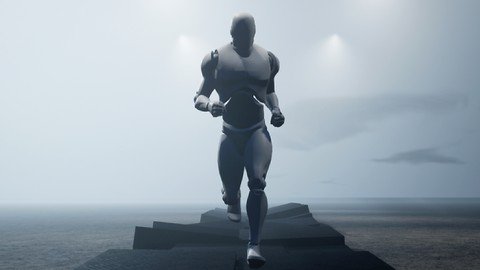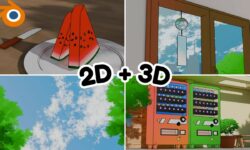Procedural animation for humans in Unreal Engine 5 by Lincoln Margison
Release date:2023, April
Duration:08 h 47 m
Author:Lincoln Margison
Skill level:Beginner
Language:English
Exercise files:Yes
This course teaches you how to create a fully procedural walk/run animation system for characters, entirely within Unreal Engine 5.1+. The system allows for complete control over the characters’ walk and run style, with manual control over every bone, using custom logic and variables inside Control Rig. This results in a highly performant system that can be used on many characters at once.
With a fully procedural animation system, your characters will adapt their movement based on their surroundings, fitting seamlessly into their environment. Creating this level of interaction with traditional static animations would require creating hundreds or thousands of walk cycle variations and a complex system to blend between them, making tweaks difficult.
Instead, a procedural system mimics how a human (or any character) would walk by figuring out the logic behind their movements. Once the system is created, it can be adapted to any character in the future, making the process much quicker and easier.
The course covers creating a procedural human animation system, but the concepts and techniques can apply to any form of procedural animation. It’s the best solution for any animations that need to be adaptive and change based on the environment, user input, or gameplay events.
The course explains every step and decision, so you understand the thought process behind it. The solutions presented are a result of 7 years of experimentation with procedural animation, and the information and ideas are not available anywhere else.
The instructor has set up a Discord server for students to ask questions and share their results.





 Channel
Channel






Hi, Chapter 110 in Section 8 is missing. It is called, “Aim math result constraint.”
Hopefully you can find it, but thank you regardless!
Hi, thank you a lot!
Would it be possible to pack all of them to have just one file to download?
Hi, please add the missing video – Chapter 110 in Section 8. Thanks!